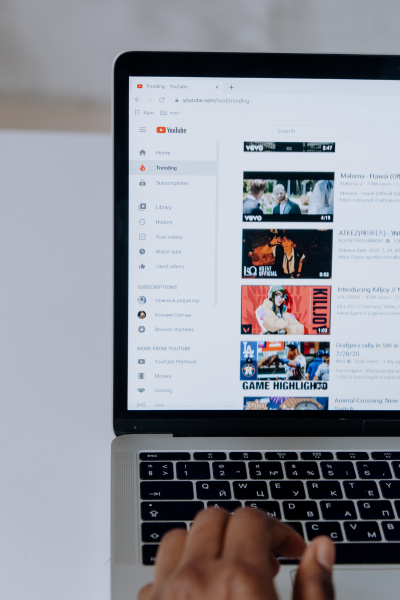Guide to YouTube Marketing.
YouTube is a powerful platform for businesses and creators looking to build an audience, promote products, and grow their brand. With billions of users engaging with content daily, a strong presence on YouTube can significantly boost your reach and visibility. This guide will walk you through the key steps to get started, optimize your channel, and ensure long-term success.
Getting Started
Set Up Your Channel Properly
We recommend starting by creating a YouTube Brand Account rather than using a personal Google account. A Brand Account allows multiple users to manage the channel, making collaboration easier. It also provides access to useful features that support long-term growth as your business expands.
Understand Your Audience
As a marketing agency, we know how valuable it is to understand your audience. YouTube Analytics offers useful insights into your viewers, helping you create content they’ll engage with. Pay attention to data like watch time, audience demographics, device usage, and viewer feedback. These metrics will guide your content strategy and help you produce videos that resonate with your audience.

content strategy
Optimize your Videos for Search
Improving your video’s visibility on YouTube starts with thoughtful optimization, similar to optimizing a website where clear titles and detailed descriptions act like strong SEO for your videos. This involves two main areas:
Effective Titles and Descriptions
Write clear, compelling titles that capture attention and include relevant keywords. Descriptions should offer context, highlight key points, and provide links to your website or related content.
Eye-Catching Thumbnails and Calls-to-Actions
Thumbnails are often the first impression viewers have of your video, so use high-quality images with bold, readable text. Additionally, add clear calls-to-action within your video and description, encouraging viewers to like, comment, and subscribe.
Maintain a Consistent Publishing Schedule
Consistency helps build audience loyalty by keeping viewers engaged, so create a schedule that works for you, whether it’s weekly, bi-weekly, or monthly, and stick to it. Regular uploads keep your audience engaged and signal to YouTube’s algorithm that your channel is active.

Growth and Visibility
Analyze your Competition
Monitoring your competitors can offer valuable insights by examining their content strategies, video performance, and engagement levels. Identify what works well in your industry and find ways to apply those strategies to your channel while adding your unique perspective.
Optimize Your Channel
Your channel layout, profile image, and banner should reflect your brand identity, using playlists to organize videos by topic or theme to make it easier for viewers to find what interests them. Ensure your channel’s “About” section is clear and information, highlighting what viewers can expect from your content.
Use Youtube Advertising
YouTube Ads can effectively boost your visibility, whether promoting a product, event or driving channel growth. Start small with targeted campaigns that focus on specific demographics or interests. Monitor performance to adjust your strategy as needed.
Work with Influencers
Partnering with establised creators in your niche can significantly expand your reach. Influencers already have a trusted relationship with their audience, and a collaboration can introduce your brand to new viewers. Choose partners whos values align with your brand for authentic and meaningful partnerships.
Continuous Improvement
Monitor Performance and Refine Your Approach
Data is a powerful tool, and we monitor website analytics to adjust design choices. Reviewing your YouTube metrics can help fine-tune your content strategy. Track key metrics like subscriber growth, watch time, and audience retention through YouTube Analytics. If specific videos perform well, consider creating similar content. If others don’t meet expectations, adjust your strategy by experimenting with different topics, formats, or posting times.
By staying flexible and learning from your analytics, you can continue refining your content and growing your presence on YouTube

